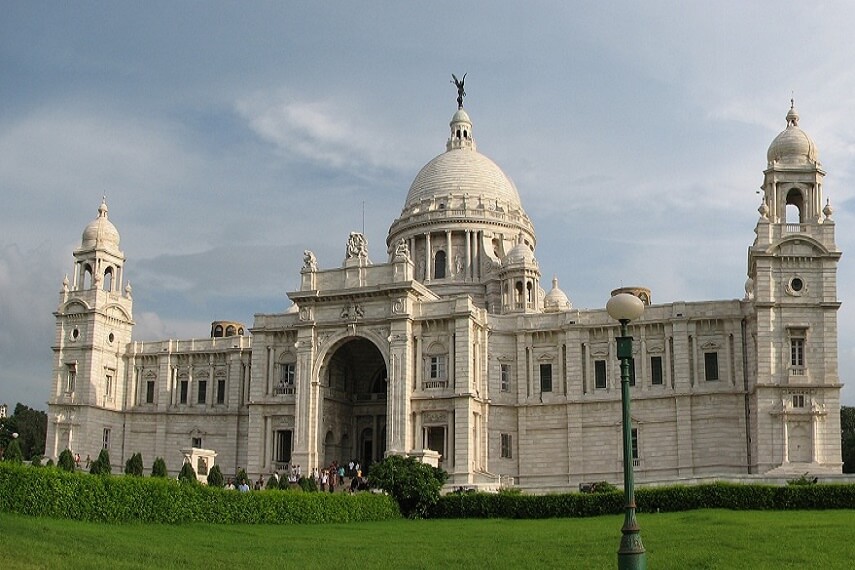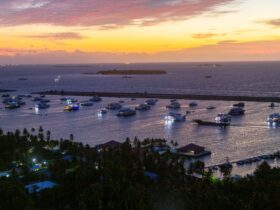In the azure waters of the Bay of Bengal lies a tiny, mysterious island that has captured the imagination of adventurers, anthropologists, and the general public alike. North Sentinel Island, part of the Andaman and Nicobar archipelago, is a place shrouded in secrecy, forbidden to outsiders, and guarded fiercely by its inhabitants. This article delves into the enigmatic history, the role of the Indian government, the reasons behind the island’s isolation, and the people who call North Sentinel home.
Historical Context: A Glimpse into the Past
North Sentinel Island’s history is veiled in the mists of time, with the indigenous people believed to have inhabited the island for thousands of years. The Sentinalese, as they are known, have fiercely resisted outside influence, maintaining a unique way of life that remains largely unknown to the world.
The first recorded contact with the Sentinalese dates back to the late 19th century when British colonial officer Maurice Vidal Portman visited the island in 1880. Portman, part of the British colonial administration in the Andaman Islands, was tasked with conducting a “friendly” contact mission. However, the encounter turned hostile, as the Sentinalese vehemently rejected any attempt at contact, prompting Portman to retreat.
The Role of the Indian Government: Protection and Preservation
Recognizing the need to protect the isolated Sentinalese and their way of life, the Indian government has taken a proactive stance in restricting access to North Sentinel Island. The island falls under the jurisdiction of the Andaman and Nicobar Islands Protection of Aboriginal Tribes Regulation (1956), which prohibits travel to designated tribal reserve areas, including North Sentinel Island.
The Indian government’s policy aims to safeguard the Sentinalese from potential threats, including diseases to which they may have no immunity. It also serves to prevent cultural interference and the potential exploitation of the island’s resources.
Closed Doors: Why North Sentinel Island Remains Off-Limits
The decision to keep North Sentinel Island off-limits to outsiders is rooted in the preservation of the unique cultural and biological diversity of the island. The Sentinalese people have chosen isolation, and the Indian government respects their decision, recognizing the potential harm that external contact could bring.
One of the primary concerns is the risk of introducing diseases to which the Sentinalese may have no immunity. The isolated nature of their society makes them particularly vulnerable to illnesses common in the outside world but potentially devastating to them. The tragic history of indigenous populations being decimated by diseases introduced by outsiders serves as a stark reminder of the importance of protecting isolated communities.
Beyond health concerns, the policy of non-interference also extends to preserving the cultural identity of the Sentinalese. The Indian government acknowledges the right of the Sentinalese to live according to their own traditions and customs without external interference.
The Sentinalese People: A Glimpse into an Uncharted World

Little is known about the daily lives, customs, and language of the Sentinalese. Their isolation has left anthropologists with few insights into their unique cultural practices. From occasional aerial observations, it appears that they engage in hunting, fishing, and gathering, using rudimentary tools and living in small, temporary shelters.
The Sentinalese fiercely resist any attempts at contact, often responding to outsiders with hostility. Their use of bows and arrows to deter intruders has become infamous, and the Indian government has consistently warned against approaching the island.
Despite their isolation, the Sentinalese play a crucial role in our understanding of human history and development. Studying their way of life could provide valuable insights into pre-modern societies and the evolution of human culture.
The Maurice Portman Incident: A Historical Flashpoint

The encounter between Maurice Portman and the Sentinalese in the late 19th century remains a crucial chapter in the island’s history. Portman’s mission, aimed at establishing friendly contact, ended in a clash as the Sentinalese vehemently rejected any external presence.
The incident underscored the Sentinalese’s determination to maintain their isolation and independence. It also highlighted the challenges and risks associated with attempting to contact uncontacted tribes. The lessons from Portman’s encounter continue to resonate, influencing the Indian government’s approach to North Sentinel Island.
The Tragic Saga of John Allen Chau: A Modern Intrusion

The year 2018 brought international attention to North Sentinel Island when an American missionary, John Allen Chau, attempted to make contact with the Sentinalese. Chau’s ill-fated expedition, motivated by a desire to spread Christianity, ended tragically when he was killed by the island’s inhabitants.
Chau’s death reignited the debate over the isolation of North Sentinel Island and the dangers of attempting contact with uncontacted tribes. While some saw Chau’s actions as a tragic consequence of cultural insensitivity, others pointed to the risks inherent in any attempt to breach the island’s isolation.
The incident prompted renewed calls for respecting the Sentinalese’s wish for isolation and reinforced the need for strict regulations to prevent further intrusions. Chau’s tragic fate serves as a cautionary tale, emphasizing the importance of understanding and respecting the boundaries of isolated communities.
Conclusion: The Enigma Persists
North Sentinel Island remains one of the last frontiers of human isolation, a place where time seems to stand still, untouched by the rapid changes of the outside world. The Sentinalese, with their fiercely guarded independence, pose questions that challenge our understanding of humanity’s past and our responsibilities in the present.
While the island’s mysteries continue to captivate the world, the Indian government’s steadfast commitment to protecting the Sentinalese and preserving the island’s unique ecosystem and cultural heritage remains unwavering. The story of North Sentinel Island serves as a reminder of the delicate balance between curiosity and respect, progress and preservation, as we navigate the complexities of our interconnected world.





























Leave a Reply
View Comments